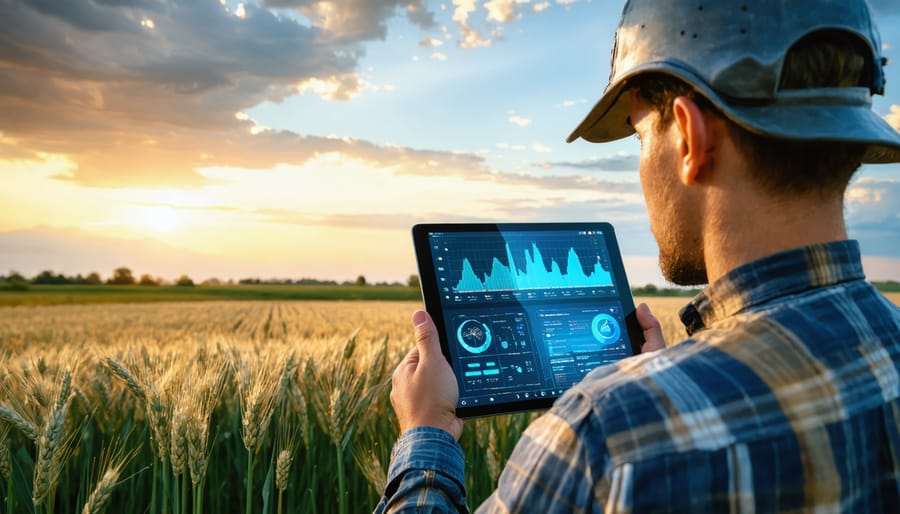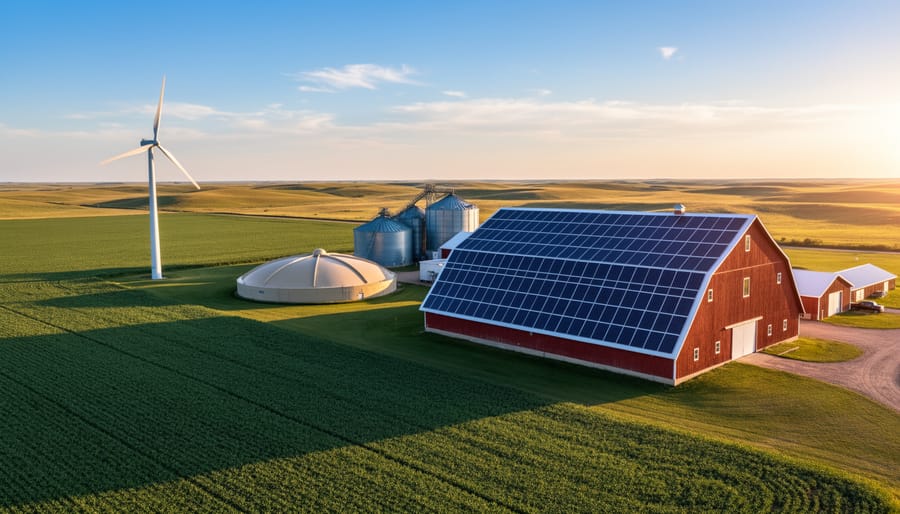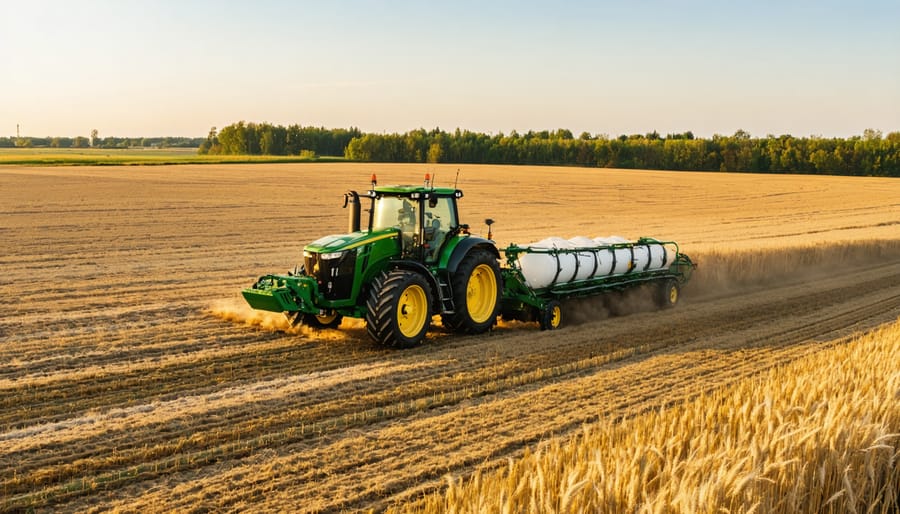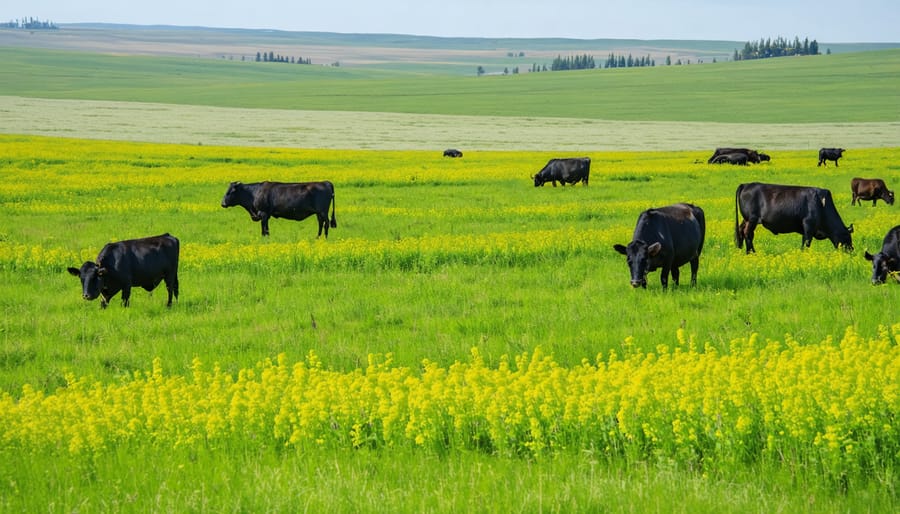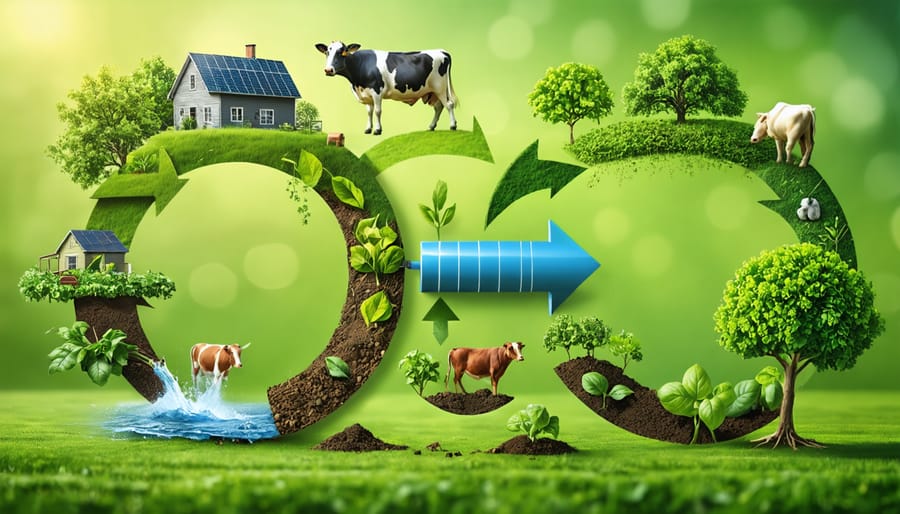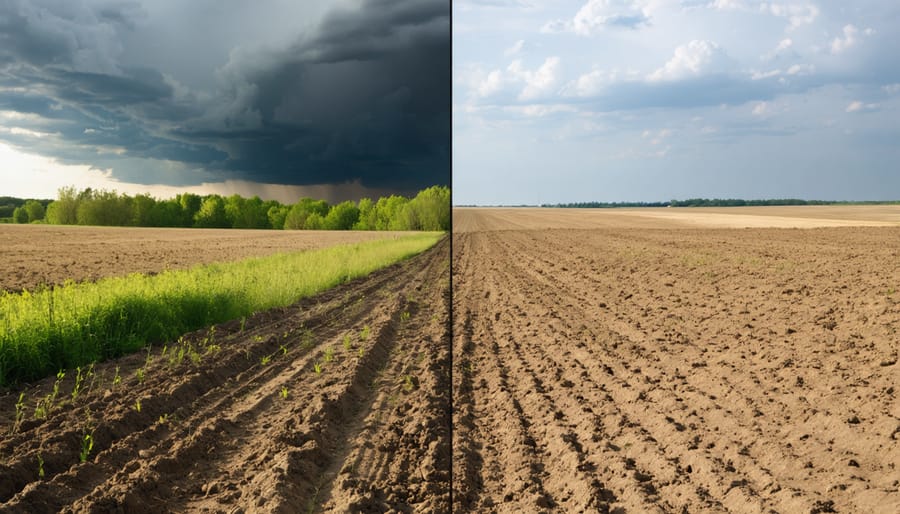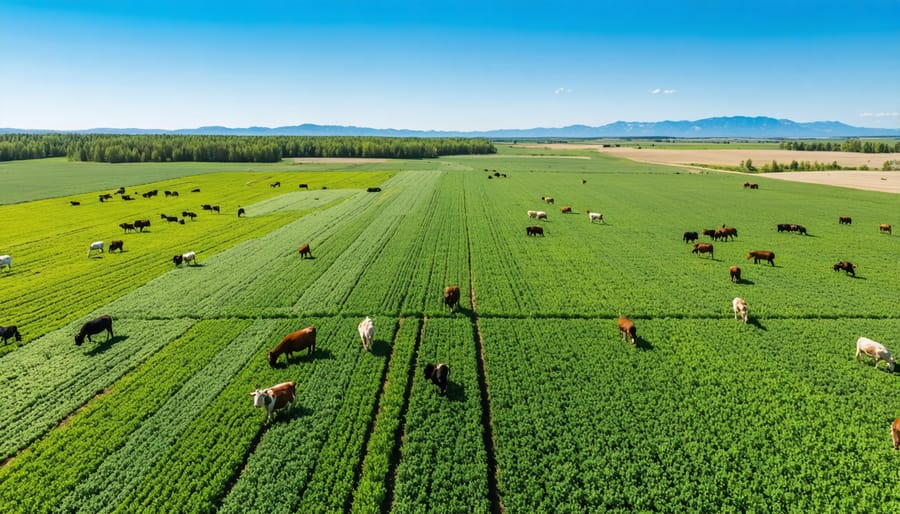Transform your 2,000-acre wheat operation in Alberta through proven precision agriculture techniques that have boosted yields by 23% across precision agriculture adoption in Prairie regions. Real-time soil moisture sensors, coupled with variable-rate irrigation systems, have helped farmers reduce water usage by 40% while maintaining optimal crop health. GPS-guided tractors and automated spraying systems now enable pinpoint application of inputs, cutting fertilizer costs by $45 per hectare and reducing environmental impact.
Third-generation farmer Mike Thompson’s success story exemplifies this transformation. His implementation of yield mapping and targeted fertilization increased his farm’s profit margins by 30% in just two growing seasons. By combining satellite imagery with machine learning algorithms, he now identifies potential crop issues three weeks earlier than traditional scouting methods, preventing yield losses of up to 15%.
These precision agriculture solutions aren’t just for large operations – even smaller farms of 500 acres have achieved remarkable results through strategic implementation of these technologies, with ROI typically realized within two growing seasons.
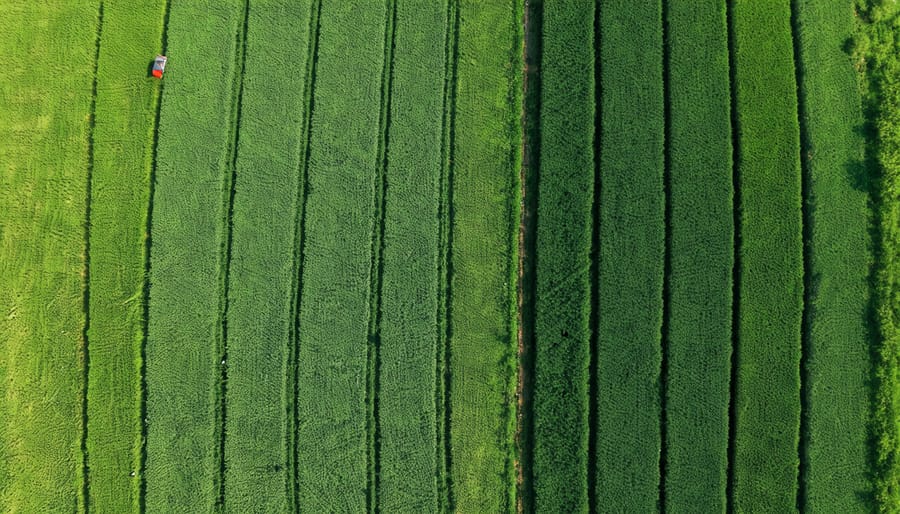
The Smart Soil Revolution at Prairie View Farm
Baseline Challenges
Before the widespread adoption of precision agriculture technologies, many Alberta farmers faced significant challenges in resource management and crop optimization. Traditional farming methods, while transforming Alberta farming practices over generations, often relied on uniform application of inputs across entire fields, regardless of soil variations or specific crop needs.
Farmers typically struggled with inefficient water usage, especially in drought-prone regions, leading to increased operational costs and reduced yields. Variable soil conditions within the same field went unaddressed, resulting in over-application of fertilizers in some areas and under-application in others. This not only affected crop productivity but also impacted soil health and environmental sustainability.
Weather unpredictability posed another significant challenge, with limited tools available for accurate forecasting and response planning. Labour-intensive monitoring methods made it difficult to detect early signs of pest infestations or disease outbreaks, often resulting in reactive rather than preventive measures. Additionally, the lack of precise yield data made it challenging to make informed decisions about seed selection and planting strategies for subsequent seasons.
Technology Integration
The integration of smart technologies at the Wilson Family Farm began with the installation of GPS-guided tractors equipped with Real-Time Kinematic (RTK) positioning, achieving accuracy within 2.5 centimetres. This precise navigation system enables optimal field coverage while reducing overlap and minimizing fuel consumption.
Variable Rate Technology (VRT) was implemented through a network of soil sensors placed strategically across the 800-hectare property. These sensors transmit real-time data about soil moisture, nutrient levels, and pH to a central farm management system. The installation process, completed over two growing seasons, included placing sensors at 50-metre intervals and connecting them to a wireless network covering the entire property.
Drone technology plays a crucial role in crop monitoring. Two agricultural drones equipped with multispectral cameras conduct weekly flyovers, capturing detailed imagery of crop health and development. The data is processed through specialized software that generates NDVI (Normalized Difference Vegetation Index) maps, highlighting areas requiring immediate attention.
The farm’s irrigation system was upgraded with smart controllers and soil moisture sensors, allowing for automated, precision-based water distribution. Mobile apps enable remote monitoring and control of irrigation schedules, with notifications sent directly to staff phones when issues arise.
A weather station network, consisting of three strategically placed units, provides hyperlocal weather data. This system integrates with the farm management software to adjust irrigation and fertilization schedules based on current and forecasted conditions.
All these technologies connect to a central digital platform, accessible via computers and mobile devices, allowing the Wilson family to make data-driven decisions from anywhere on the farm or off-site.
Real-Time Monitoring Systems in Action
Soil Moisture Sensors
Soil moisture sensors have revolutionized irrigation practices across Alberta’s farmlands, helping producers make data-driven decisions about when and how much to water their crops. These sensors, typically installed at various depths throughout the field, provide real-time measurements of soil moisture content, allowing farmers to optimize their water usage and maintain ideal growing conditions.
Mike Thompson, a third-generation farmer near Lethbridge, reports a 30% reduction in water consumption after implementing a network of moisture sensors across his 800-hectare operation. “The sensors tell me exactly what’s happening beneath the surface,” Thompson explains. “Instead of guessing or following a fixed schedule, I can irrigate based on what my crops actually need.”
Modern soil moisture sensors use either capacitance or resistance technology to measure water content, with data transmitted wirelessly to smartphones or desktop computers. This immediate access to soil conditions helps farmers prevent both over-watering, which can lead to nutrient leaching and root diseases, and under-watering, which can stress crops and reduce yields.
Most Alberta farmers find success with sensors placed at 15 cm, 30 cm, and 60 cm depths, creating a comprehensive moisture profile throughout the root zone. The initial investment, typically ranging from $2,000 to $5,000 for a basic system, often pays for itself within two growing seasons through water savings and improved crop health.
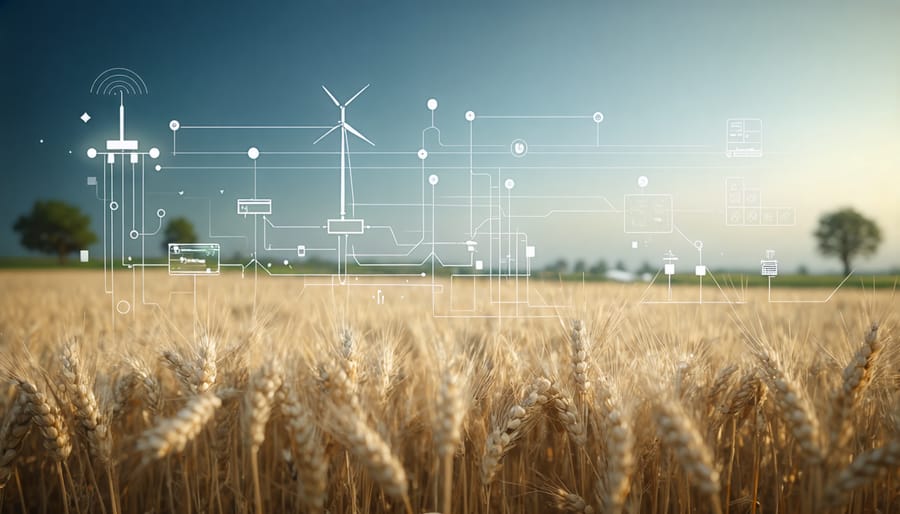
Nutrient Management Technology
Modern nutrient management technology has revolutionized how Alberta farmers approach soil health management and fertilizer application. Using advanced soil sensors and GPS-guided systems, farmers can now create detailed nutrient maps of their fields, identifying exactly where additional nutrients are needed and where they’re abundant.
These smart systems typically include real-time soil monitoring sensors that measure key nutrients like nitrogen, phosphorus, and potassium, along with soil moisture levels. The data is transmitted to a central management system, allowing farmers to make informed decisions about fertilizer application rates across different zones of their fields.
Variable-rate technology (VRT) applicators work in tandem with these sensors, automatically adjusting fertilizer rates as equipment moves across the field. This precision ensures that each area receives exactly what it needs – no more, no less. For example, several farms in central Alberta have reported up to 20% reduction in fertilizer use while maintaining or improving crop yields using these systems.
Farmers can also integrate historical yield data and satellite imagery to enhance their nutrient management strategies. This comprehensive approach not only optimizes input costs but also significantly reduces environmental impact by preventing over-application of nutrients and potential runoff into local water systems.
Real-time monitoring capabilities allow for quick adjustments during the growing season, ensuring crops receive optimal nutrition at critical growth stages. This responsive approach helps maximize yield potential while maintaining responsible stewardship of the land.
Weather Station Integration
In Alberta’s diverse climate zones, weather station integration has become a cornerstone of precision agriculture success. Local farmers have found that installing on-farm weather stations provides crucial real-time data that directly influences daily farming decisions. These systems typically monitor temperature, precipitation, wind speed, humidity, and soil moisture levels at multiple points across the field.
Take the example of Sarah Thompson, a third-generation farmer near Lethbridge, who installed a network of three weather stations across her 2,000-hectare operation. The system alerts her when specific fields reach critical moisture thresholds, allowing for precise irrigation scheduling that has reduced water usage by 22% while maintaining optimal crop health.
The weather stations communicate with other precision farming tools, creating a comprehensive management system. When soil moisture sensors indicate dry conditions in certain areas, the irrigation system automatically adjusts its application rates. This integration has proven particularly valuable during Alberta’s unpredictable spring seasons, helping farmers time their seeding operations with greater accuracy.
Local agricultural extension services report that farms using integrated weather stations have shown improved resilience to weather-related challenges. By combining historical weather data with real-time monitoring, farmers can better predict frost risks, plan spray applications, and schedule harvesting activities. Most systems now offer mobile app integration, allowing farmers to monitor conditions and receive alerts wherever they are, ensuring timely response to changing weather patterns.
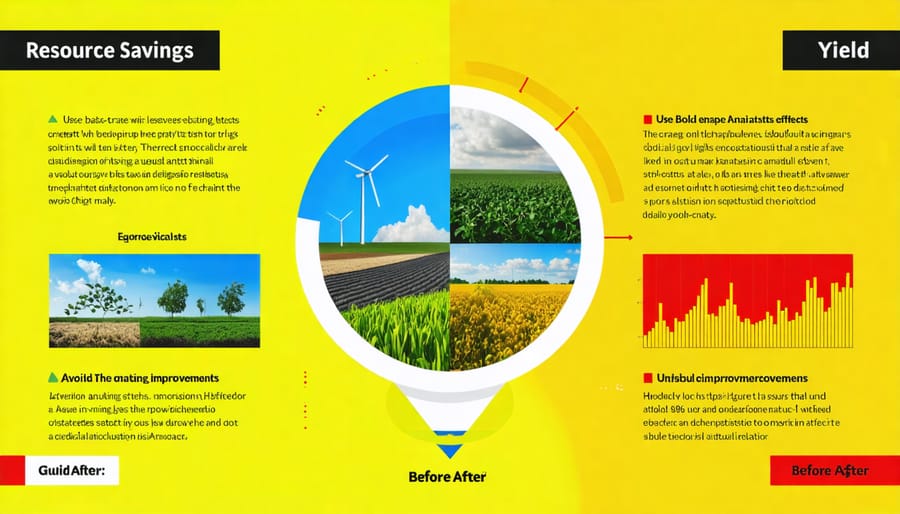
Measurable Results and Environmental Impact
Resource Conservation
Recent data from Alberta precision agriculture adopters shows remarkable improvements in resource conservation through smart farming practices. By implementing sustainable farming methods, farmers have reduced water consumption by 30-40% compared to traditional irrigation methods.
The Smith family farm in Lethbridge County reported a 35% decrease in water usage after installing soil moisture sensors and automated irrigation controls. Their variable-rate irrigation system adjusts water application based on real-time soil conditions, preventing over-watering while maintaining optimal crop health.
Fertilizer efficiency has also seen significant improvements. Using GPS-guided precision application systems, farmers are reporting 20-25% reductions in fertilizer use. The Thompson farm near Red Deer achieved a 23% decrease in nitrogen application while maintaining yield levels, resulting in annual savings of approximately $15,000 on their 1,000-hectare operation.
Soil mapping and variable-rate technology have enabled farmers to apply inputs only where needed. Data from the Alberta Precision Agriculture Project shows that farms using these technologies typically reduce their overall chemical inputs by 15-20% in the first year alone. This not only cuts costs but also minimizes environmental impact and helps preserve soil health for future generations.
These resource conservation benefits are particularly significant for our prairie region, where water management and input costs are ongoing challenges. Many local farmers have found that the initial investment in precision technology pays for itself within 2-3 growing seasons through reduced input costs.
Economic Benefits
The economic impact of precision agriculture has been particularly significant for Alberta farmers, with many reporting substantial returns on their initial technology investments. Based on a 2022 survey of 150 farms across central Alberta, those implementing precision agriculture techniques saw an average reduction of 15% in input costs while achieving yield increases of 12% to 18%.
For example, the Peterson family farm in Lacombe County documented savings of approximately $45 per hectare on fertilizer costs alone through variable-rate application technology. Their soil mapping and targeted nutrient management approach resulted in more efficient use of resources, reducing overall fertilizer usage by 20% while maintaining optimal crop health.
Water management improvements through precision irrigation systems have led to water savings of up to 30% for participating farms, translating to reduced pumping costs and lower energy consumption. These systems typically pay for themselves within two to three growing seasons.
Labour costs have also decreased significantly, with automated guidance systems reducing operating hours by an average of 15%. This efficiency gain allows farmers to redirect their time and resources to other vital farm operations or quality-of-life improvements.
The initial investment in precision agriculture technology varies depending on the scale of implementation, but many farmers report breaking even within 2-4 years. Government grants and agricultural technology incentive programs have helped offset these costs for many Alberta farmers, making the transition more accessible.
When considering the long-term economic benefits, precision agriculture has shown to increase property values by 10-15% on farms where comprehensive systems have been implemented, providing additional equity for farm families.
Implementation Guide for Alberta Farmers
Ready to implement precision agriculture on your farm? Here’s your step-by-step guide to getting started in Alberta:
Begin with soil mapping and analysis. Contact your local agronomist to conduct comprehensive soil tests across your fields. This baseline data will guide your precision farming decisions and help identify areas needing specific attention.
Next, invest in essential equipment gradually. Start with a GPS-enabled tractor guidance system, which typically costs between $5,000 to $15,000. Many Alberta equipment dealers offer lease-to-own options to help manage initial costs.
Install field sensors strategically. Place moisture sensors every 40 hectares, focusing on areas with different soil types. Connect these to a central monitoring system for real-time data collection.
Develop a variable rate application plan. Work with local precision ag specialists to create prescription maps for your fields. Many Alberta agricultural services boards offer workshops and consulting services to help with this process.
Join local precision farming networks. Connect with the Alberta Precision Agriculture Association and attend their quarterly meetings. Learning from experienced farmers in your area can significantly reduce the learning curve.
Start small with a test plot of 65 hectares or less. Monitor results carefully and document all interventions and outcomes. This approach allows you to refine your methods before scaling up.
Remember to leverage available support programs. The Canadian Agricultural Partnership offers funding for technology adoption, and several Alberta-based agricultural tech companies provide free training sessions for new users.
Precision agriculture represents a transformative opportunity for Canadian farmers to enhance their operations while contributing to environmental sustainability. The measurable benefits – from 15% reduction in input costs to 20% increase in yield efficiency – demonstrate the real value of these technologies for Alberta’s agricultural community. By embracing tools like GPS guidance, variable rate technology, and data analytics, farmers can make more informed decisions while preserving our precious soil and water resources. The success stories from local farms show that precision agriculture isn’t just about technology – it’s about building smarter, more resilient farming operations for future generations. As our agricultural landscape evolves, adopting these practices isn’t just an option; it’s a pathway to maintaining Canada’s position as a leader in sustainable farming. Take the first step today by connecting with local precision agriculture experts or joining farmer-led technology groups in your area. Together, we can cultivate a more precise and prosperous future for Canadian agriculture.

